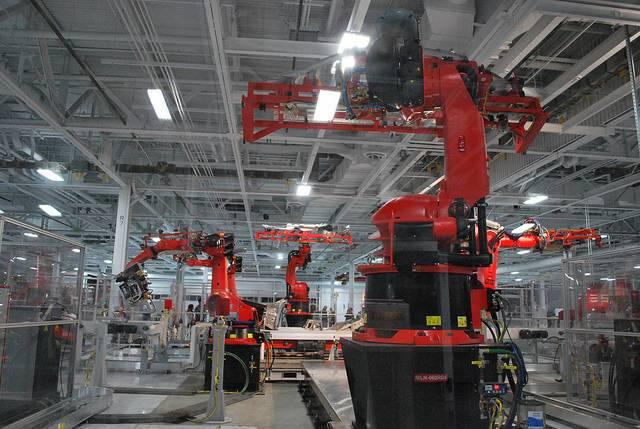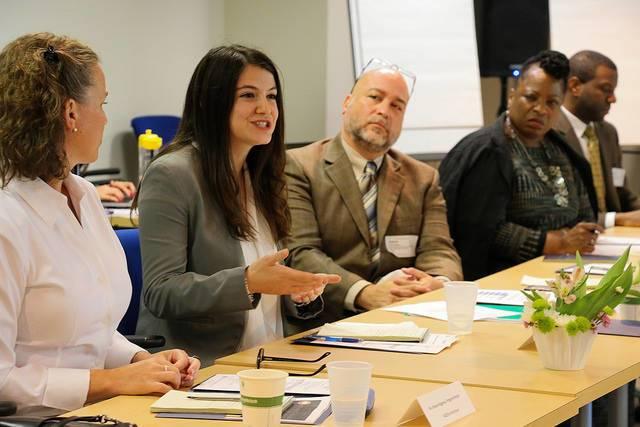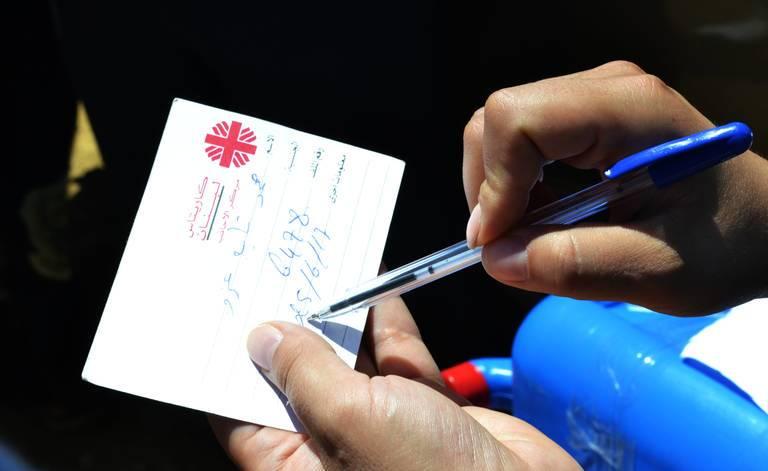UK citizens among WEF’s “Young Global Leaders”


3p Weekend: 10 Corporate Hiring Programs Worth a Closer Look


With a busy week behind you and the weekend within reach, there’s no shame in taking things a bit easy on Friday afternoon. With this in mind, every Friday TriplePundit will give you a fun, easy read on a topic you care about. So, take a break from those endless email threads, and spend five minutes catching up on the latest trends in sustainability and business.
In the weeks following U.S. President Donald Trump's first attempt to ban travelers from seven majority-Muslim countries, Starbucks caught heat for an odd reason: a pledge to hire 10,000 refugees.
Angry social media users called for a boycott and complained that the coffee chain was giving preferential treatment to refugees while American military veterans remained out of work. This prompted Starbucks to remind customers of its robust veteran hiring initiative, which it bolstered even further in response to the kerfuffle.
As a publication focused on socially-responsible business, this conflict struck us as odd. After all, plenty of diversity groups struggle to find work -- from military veterans and refugees to people with disabilities or marks on their criminal record. There's more than enough need to go around, and any program that seeks to give at-risk groups a shot at employment is a win in our book.
With that in mind, this week we tip our hats to corporate hiring programs looking to make a difference the old-fashioned way: with a job.
1. USAA
Hiring veterans“We know what it means to serve” is the time-honored slogan of financial services provider USAA. But the company insists it's more than a catch phrase.
The company has long offered competitive financial products and benefits to veterans, which they can pass on to their children free of charge. But the company's active veteran hiring program is less widely known.
The company strives to tap veterans and military spouses for 30 percent of its new hires -- on the way to achieving 25 percent military employee representation by 2020.
The company employs six distinct hiring, training and recruitment programs to support veteran employees -- from veteran-to-veteran mentoring programs to an internal resource group.
2. EY
Hiring people with disabilitiesHiring people with disabilities is close to EY's heart. The company's co-founder, Arthur Young, was deaf with low vision -- a challenge that prompted him to leave his law career, move into the accounting field, and start the company then known as Ernst and Young.
The company says it integrates "ergonomics and accessibility into our offices, technologies, tools and business processes." And it claims this flexible work environment allows employees with disabilities and those recovering from illness or injury to continue to do their jobs comfortably.
The company hosts four employee networks for workers with disabilities, as well as caregivers and the parents of children with special needs. It continues to emphasize hiring of people with all abilities, and in 2015 Diversity Inc. magazine ranked it as the top company for employees with disabilities.
3. Disney
Hiring veteransThe Walt Disney Co. -- which includes Disney, ESPN, Marvel and more -- announced its Heroes Work Here program back in 2012. The company initially planned to hire 1,000 veterans over three years -- a goal it blew past in mere months.
The company also hosted the Disney Veterans Institute in 2013, which brought together hundreds of companies and organizations looking to hire veterans.
"Through our groundbreaking Heroes Work Here initiative, we’ve hired more than 8,000 vets across our company — and helped another 15,000 find jobs outside of Disney,” Disney Chairman and CEO Bob Iger said at a shareholders meeting in 2015.
The company also boosted its support of veteran-owned businesses from $100,000 to $3.3 million in 2015, Iger said.
4. Chobani
Hiring refugeesAlthough it doesn't have a formal target, Chobani is arguably the world's top company for hiring refugees. Founder and CEO Hamdi Ulukaya hails from what is now largely Kurdish Eastern Turkey and emigrated to the U.S. in 1994.
After going on to found the multibillion-dollar Greek yogurt company, he remained a steadfast recruiter of immigrants and refugees — a practice that attracted boycotts and even death threats.
But Ulukaya didn't back down. Today, about 30 percent of Chobani's factory employees are resettled refugees. For more companies leading in refugee hiring, check out this list from Fast Company.
5. Sprint
Hiring veteransIn May of last year, Sprint teamed up with former President Barack Obama and the White House on a broad-sweeping veteran hiring initiative.
After years of building its veteran employee network, Sprint pledged to hire 2,500 veterans as part of Joining Forces, a White House initiative aimed at securing civilian careers for veterans and their families.
Sprint is one of more than 50 leading U.S. telecommunications and technology companies that pledged to hire a combined 100,000 veterans and military spouses by 2021.
6. Pop! Gourmet Foods
Hiring the formerly incarceratedDavid Israel came up with the idea for Pop! Gourmet Foods while serving time in prison for four years. He has since grown the purveyor of gourmet popcorn and chips into a multimillion-dollar company with distribution in 19 countries. And he still emphasizes hiring formerly incarcerated people like him.
"Immediately, I hired my first cellmate as our fourth employee,” he told Civil Eats last year. “We started working with the Department of Corrections, and they’d send us people out of work release.”
Today, about 20 percent of Pop!'s staff was formerly incarcerated. For more companies that seek to hire the formerly incarcerated, check out our list here.
7. PwC
Hiring people with disabilitiesPeople with disabilities represent America's largest diversity group, says professional services company PwC. The firm first formalized disabilities initiatives as part of its talent strategy back in 2009.
Since then, it has steadily rolled out programs to recruit, hire and support employees with disabilities. It now offers an employee network for staffers with disabilities and a host of programs to support these employees. By 2014, the company's efforts nearly tripled the number of PwC staff who self-disclosed their disability status.
The company took its effort to the next level that year with the launch of its Ability Reveals Itself program, which seeks to foster every employee's unique skills and harness them into fitting careers. The company also works directly with schools to recruit and place students with disabilities, Brad Hopton, a tax partner and disability inclusion networks partner champion at PwC, told 3p last year.
8. Pacific Gas and Electric
Hiring veteransPG&E launched its 1,000 Careers Project in 2015, with the goal of hiring 1,000 veterans into skilled positions over eight years.
"This effort is about more than providing veterans with a paycheck. It's about creating opportunities for them to build successful, long-term careers," Laura Butler, PG&E vice president of talent management and inclusion and chief diversity officer, said in a statement. " As a nation, we have the duty to make sure veterans have access to good career opportunities when transitioning back to civilian life."
The California gas and electric company is no stranger to hiring veterans. But its latest initiative looks to take things a step further -- offering ongoing support for veteran hires and looking to support veteran-owned suppliers.
9. Procter and Gamble
Hiring people with disabilitiesProcter and Gamble is looking to transform its manufacturing plants by hiring more people with disabilities: More than 40 percent of the staff at its plant in Auburn, Maine, have some form of developmental or physical disability.
"This model — as well as others like it at our Lima, Ohio, and Dover, Delaware, plants — is being pursued across other U.S. manufacturing and distribution sites," P&G said in 2014.
The company hosts an internal network for employees with disabilities and continues to emphasize this group in hiring.
10. CSX
Hiring veteransAmerican railway company CSX is a proud military-friendly employer. 1 in 5 CSX employees has served in the military. And the company says it is "actively seeking employees with the experience of service in the American armed forces" to join its ranks.
Image credit: Flickr/c-lemon
Tesla Charges Into the Trucking Industry


Despite never having made a profit in its 14 years, Tesla Motors recently surpassed Ford and then, briefly, General Motors in market value. Nevertheless, between its new solar products and a record quarter of automotive sales, the Silicon Valley-based automaker and its futurist co-founder, Elon Musk, are bullish on the company’s future.
To that end, Musk announced yesterday that Tesla will introduce three new all-electric vehicles in the coming months: a convertible modeled after its first car, the Roadster; a semi truck in September; and a pickup two years from now at the latest.
Musk alluded to these vehicles in “Part Deux” of the company’s master plan, released last summer, but now the timeframe for the rollout of these vehicles is specific. As for an electric bus, Musk offered no timetable for the vehicle he described last year as critical for future mobility.
Tesla churned through $970 million during last year’s final quarter, Bloomberg's Dana Hull reported on Thursday. But investors are still showing confidence in the company, as it raised $1.4 billion through a combined stock and debt offering in March.
Tesla’s move into the trucking sector could shake up the industry, particularly with respect to the development of autonomous driving technology. While the autonomous vehicle conversation often centers on passenger cars – and the legal fights between companies such as Uber and Google – startups including Starsky Robotics are striving to make autonomous trucks mainstream.
Trucking is the backbone of the American logistics industry, yet it faces plenty of struggles, including the difficulties companies have in recruiting drivers. The autonomous delivery of goods via trucks could end up becoming a larger and more profitable business than autonomous cars. Hence Tesla truly could become an integrated transportation company that could give the Big Three automakers a run for their money.
Wall Street was certainly impressed by Musk’s announcement. After a few days of declines, Tesla’s stock spiked almost 2.5 percent, almost hitting $307 a share before settling at a price of $304 when the markets closed Thursday afternoon.
Don’t count on the euphoria lasting for long. Many analysts are quick to point out that Tesla has a long history of over-promising and under-delivering. That pressure could become relentless this summer as both consumers and investors wait and see if the company can really ramp up production.
The upcoming arrival of the Model 3 -- now scheduled for this summer -- could either leave automobile industry analysts and electric car mavens enthused or further soured on the company. If Tesla’s much-anticipated Model 3 falls short of expectations or faces more delays, watch for investors to become nervous about the company’s long-term prospects yet again.
Then there is the cart-before-the-horse problem: Should Tesla make sure cars are rolling off its assembly line with a steady frequency before the company starts talking up trucks?
While self-driving trucks running off electricity sound revolutionary, that electric drivetrain needs to be perfected first. And Tesla will not be alone in this market: Mercedes-Benz, which has long boasted a thriving truck business, is developing its own electric truck and plans to test it on German roads this year. The Chinese automobile manufacturer BYD is also promising a new line of electric trucks and is promoting them aggressively here in the U.S.
With concerns over trucking’s impact on traffic, air quality and the environment, this sector will soon experience rapid change unthinkable just a few years ago -- no matter who occupies the White House.
Tesla has proven that it is a worthy upstart the world’s leading automakers are foolish to ignore. But sluggish production numbers could start to chip away at the company’s Teflon-like reputation, and prevent it from becoming even a minor player in the trucking sector.
Image credit: Patrick Herbert/Flickr
Ford Considers Bamboo for Car Interiors


We’ve seen bamboo in countless forms over the years. It’s a great material for hardwood floors; we’ve chopped, cooked and served with it in the form of cutting boards and utensils; and, of course, many of us have dined on it when we had that late-night urge for takeout Chinese food. We can plant it to block out those annoying neighbors. And in Chinese cities such as Hong Kong, bamboo scaffolding is a common sight.
Now Ford Motors is tinkering with the idea of using bamboo as a raw material. The company’s Asia-Pacific division says it is working with suppliers to evaluate the viability of bamboo for both upholstery and plastic car parts.
Ford’s research team concluded that bamboo performs much better than other natural and synthetic fibers whether it is subjected to extreme heat, as well as in impact and tensile strength tests. Most of Ford’s research on bamboo products is happening at the company’s research and engineering center in Nanjing, China – right in the middle of a region rich in both bamboo and biomass waste from agriculture.
So, could the automaker’s work mean more bamboo will soon appear in automobiles made by Ford and its competitors? After all, bamboo is finding its way into more building materials, such as in composites for fence and deck panels. Plenty of scientific studies show that whether it is engineered or blended with other materials, bamboo maintains its strength and flexibility in even the most extreme conditions. And unlike wood or other plant fibers, bamboo regenerates quickly, with some varietals growing as quickly as several inches in a day. But as any novice gardener or landscaper knows, bamboo can become invasive quickly and can overtake natural habitats such as rain forests in very little time.
Ford has been experimenting with alternative materials and design processes for several years. Some of these raw materials ended up in various automobiles, including soy foam in seat cushions, kenaf leaves in door bolsters, recycled denim layered under carpeting, and Repreve-branded fabric made from recycled bottles for seat coverings. Earlier this year, the company announced that adjustable cargo shelves in its EcoSport SUV incorporated a design inspired by bee honeycomb. And agave plant byproducts from Jose Cuervo’s tequila distilling operations could end up as bioplastic components in future Ford vehicles.
In addition to using more sustainable materials, Ford insists it is accelerating its recycling efforts. While the vast majority of an automobile’s materials are recyclable, there are always some pesky challenges, such as adhesives. On that point, Ford has explored the possibility of recreating the gecko’s sticky toe pads in order to reduce the amount of glues and foams it uses during its manufacturing processes.
We are far away from the time when automakers can say they are part of the emerging circular economy, but the quest by Ford and its competitors to use more responsible materials signals the industry may be changing its stodgy ways.
Image credit: Ford Motor Co.
Silicon Valley Gets Its Report Card On Workplace Diversity (And It's Not Pretty)


How well do U.S. businesses really do when it comes to workplace diversity? Google’s disagreement with the Department of Labor -- which found “very significant discrimination” against women at the Google headquarters -- suggests there are many interpretations of what constitutes a truly diverse workforce in Silicon Valley.
A new San Francisco-based startup is trying to simplify that question. Blendoor, launched by CEO Stephanie Lampkin, recently released a report rating Silicon Valley tech companies on four key drivers: leadership, retention, recruitment and social impact.
Companies were evaluated not only on whether they support gender and ethnic diversity in their hiring quotas, but also how they reflect those ideals. For example, did their leadership also make an effort to serve as board members for diversity-related nonprofits and organizations? And what specific, proactive steps did the company take to increase retention in its ranks?
Needless to say, the results were insightful. Leading the pack were HP (87 out of a possible 100), Paypal (82), Intuit (80), Yelp (80), Apple (80) and Cisco (80). But while Intuit and Cisco both earned the same ranking, their sub-scores differed. Intuit ranked higher than Cisco on leadership diversity, while Cisco scored better on diversity recruitment.
The results also suggest there are different understandings of just what diversity means and how innovative companies feel they need to be to be considered a “diverse” company. Lampkin’s questionnaire doesn’t just probe the basics when it comes to ethnic and gender composition, but also seeks to get to the heart of what the companies really see as their role in a diversity-driven Silicon Valley.
Quite a number of the companies appeared to have little to no strategies for increasing diversity when it came to retention, recruitment or social impact. Wayfair and Whatsapp missed out almost completely when it came to recruitment and social impact scores.
It’s unclear whether some of the information was simply not available or the data actually reflected poor performance. But it would seem that many of the companies that make their bread and butter from social media would be engaged in promoting those efforts through social involvement.
Still, other companies, like YouTube, which earned 49 (rating it higher on social impact than in representing its leadership with diverse talent) and its sister company, Google (69), which received high marks for social engagement/impact and lower marks in leadership diversity and retention) reflected the bulk of tech companies, with scores that suggest effort is being made, but, as Lampkin said, “There’s plenty of room for improvement.”
Image credit: Flickr/Global Health Fellows Program II
Tom’s of Maine Founder Wants to Revitalize the U.S. Apparel Industry


Tom Chappell co-founded Tom’s of Maine with his wife, Kate, in 1970 and revolutionized the personal care industry. Over the years, skeptics said there was absolutely no way consumers would buy apricot- or calendula-scented deodorant; the same was said about fennel mixed with propolis and myrrh in order to create toothpaste.
But then the products started to appear at retailers including Trader Joe’s and Target. A decade ago, Colgate-Palmolive acquired Tom's of Maine for a reported $100 million.
Soon after the sale closed, Chappell was inspired to establish another company with a similar mission -- only this time within the apparel industry.
During a trek through Wales, he struggled to find a fabric that could wick away moisture, keep him warm, and allow him to go from the trail to town without having to change. Cotton, silk and synthetics were not up to the task. Wool, if woven in a certain way, could do the trick. But sheep in the U.S. are generally raised to produce meat, not wool.
Chappell insisted that he could transform clothing the way he changed personal care, and Rambler’s Way was born.
The idea behind Rambler’s Way is a high-performance clothing line that looks great with an entirely American supply chain. Chappell developed relationships with ranchers in Western states. He found both a wool-scouring plant and a spinning mill in South Carolina, and partnered with a knitting mill in North Carolina.
But in the decade since Chappell conceptualized his latest venture, he has confronted one huge challenge: the American consumer.
Americans’ simmering resentment against manufacturing moving overseas finally bubbled over in the last few years, the result of which led to the insurgent presidential candidacy of Bernie Sanders and, now, the insurgent presidency of Donald Trump.
At the same time, Americans want their products fast and they want them cheap – whether they go to the big-box stores like Target and Walmart or have them delivered to their doorstep via Amazon. Hence the struggle for companies that are determined to manufacture clothes in the U.S., from Los Angeles’ American Apparel to Massachusetts' Osmium. The 2013 Rana Plaza tragedy in Bangladesh sparked some interest in both domestic and 'ethical' clothing manufacturers, and consumers understand the appeal of locally-made clothes – as long as they don’t have to pay for them.
And as a result, the American textile and clothing sector has declined to the point that many of the mills that once employed many workers in the South and New England, as well as their suppliers, are gone.
As profiled in Inc. magazine this month, Chappell had to slowly build his own vertically-integrated supply chain. His journey included cajoling ranchers into raising a particular breed of sheep known for its wool quality. At one point, he even tried to launch his own ranch. Finding a mill that could create the thin and lightweight fabric he coveted was also a daunting task.
Then there was the sales and distribution of Rambler’s Way clothing. At first, Chappell tried to rely on independent retailers and consignment agreements. But the lack of interest, as well as the boom in online shopping, almost shuttered the company two years ago. Now, it is making a big push into brick-and-mortal retail stores, running counter to industry trends. The first stores have opened in towns such as Hanover and Portsmouth in New Hampshire, as well as in the company’s home base of Kennebunk, Maine. More stores are scheduled for launch across New England.
Chappell believes there is a target market for this line of men’s and women’s clothing, and the clothes reflect a timeless quality that should appeal to just about every consumer. But unfortunately for American manufacturing, customer’s hearts and wallets are far from aligned. Men’s shirts, including a classic wool gabardine button-down, are priced as high as $230; a shirt at H&M or Target costs a tenth of that, an easier sell for consumers even if they know how it may affect garment workers in countries such as Cambodia, Bangladesh and China.
Image credit: Rambler’s Way
New App Could Help Refugees Access Bank Accounts, Avoid Black Market


Refugees seeking salvation from their war-torn countries are often met with harsh realities in their new homes. Beyond finding ways to educate their children, support their families and avoid prejudice, many refugees lack proper identification -- which can complicate their efforts to open a bank account.
Meet Taqanu, a new startup aiming to help refugees assimilate to their new countries by giving them an alternative way to prove their identity. The “bank for all” company allows people to use their smartphones — a popular commodity among refugees — to create a digital profile. The app compiles data including social media information as well a “reputation network,” which lets friends and family members confirm the user’s identity. The more the app is used, the more data it collects to improve the user’s profile.
This identity-building app would allow banks to trust the identity of the refugee and thus open an account in his or her name. Without access to a bank account, refugees cannot deposit checks or safeguard wages earned from work. This, as senior director for economic recovery and development at the International Rescue Committee, Radha Rajkotia, told Fast Company, can push refugees toward an informal economy.
“If you don’t actually have an account to be paid wages, it keeps people working in the black [market] economy,” Rajkotia said.
Without a stream of income, refugees can choose to partake in underground economic activities.
Newsweek reported in May 2016 that as many as 18,000 Syrians had sold their organs on the black market in order to fund their trips out of Syria since the start of the conflict in 2011. And ABC reported in January that Egypt and Turkey, two popular destinations for Syrian escapees, have become “epicenters for organ trafficking.”
A 2015 Vice article highlights the impossible choice Syrian refugees face in Jordanian camps: Stay in the camp, or work in the black market. Stores are willing to take chances on Syrian refugees because the reward -- paying Syrians half as much to work twice as long -- heavily outweighs the risk of getting handed a small fine or court notice.
This informal economy also intensifies relations between the refugees and the citizens in their new homes. Citizens hosting the refugees sometimes view them as stealing work from their own countrymen and avoiding paying taxes because of the under-the-table standard.
If Taqana is able to secure partnerships with banks and properly advertise its service to refugees, the app could potentially push refugees to the formal market and allow them to reap major benefits. But it’s still an uphill battle for Taqanu.
The company needs to overcome regulatory approval and slow bureaucratic agencies; it must gain bank cooperation and funding. It’s also quite possible that refugees simply may not want the service because they don’t want to be tracked. If the refugees plan on hopping borders and moving country to country until they feel comfortable, they will likely be hesitant to use a service that wants to track their every move.
Daniel Buchner, head of decentralized identity at Microsoft, the computer giant helping advise Taqanu, said the biggest challenge the app faces is regulation.
“I’d say their No. 1 challenge is governments and bureaucratic agencies being slow to adapt their models and regulations to enable new types of innovation that may not fit within the confines of rules that create a slew of unintended consequences,” he told Fast Company’s Adele Peters.
Taqanu seems to have the best chance at early success in Germany. In 2016, Germany enacted a law requiring banks to offer at least basic services to everyone, including refugees. However, banks have been slow to fully adopt the law, mainly because questions remain over identification and the potential for money laundering. Taqanu’s model for providing transparency and identification to refugees may very well help ease those hesitations for banks.
The company is slated to present its app to bankers and policymakers at the G20 summit in Hamburg, Germany, this summer.
Image credit: Trocaire/Flickr
Pope Francis Opens Laundromat to Serve the Homeless for Free


Six washers and dryers lining a creamsicle-colored wall in Rome’s Trastevere neighborhood exemplify Pope Francis’ sweeping efforts to alleviate homelessness. The pope, who’s the namesake for the new Pope Francis Laundry, sponsored the creation of a laundromat to service the city’s homeless free of charge.
The laundromat is the newest addition to the San Gallicano center run by the Sant’Egidio community. For more than 10 years, the center has offered showers, clothes, medical assistance and food to the homeless, Crux Now reported.
Whirlpool donated the dozen laundry machines, while Procter and Gamble supply the detergent. Procter and Gamble’s commitment to helping the homeless in Rome began in 2015 when the company donated free shaving cream and razors to barbershops as part of an initiative to give the homeless free haircuts and shaves.
It’s easy to limit the scope of what the homeless need to categories like food, water and shelter, but their needs are much broader than that. The Vatican isn’t the first place to think about providing free laundry service to those struggling to afford it. In the United States, the nonprofit Laundry Loves pairs the homeless with volunteers who pair for a load in exchange for a conversation. Since its creation 14 years ago, Laundry Love has cycled through a million loads of laundry.
Laundry is a drive for change in Australia as well, where the nonprofit Orange Sky Laundry offers to do free loads of laundry out of its 11 operating vans equipped with a washer and dryer.
But the needs of the homeless extend well beyond a fresh outfit. Austin, Texas’ effort to curb homelessness began with the idea of creating truly affordable housing. Alan Graham, the CEO of Mobile Loaves and Fishes, spearheaded the project to bring the chronically homeless of Austin into 135 tiny homes plotted in a 27-acre lot. The village features a medical center, amphitheater, wood workshop, chapel, market and communal garden. Rent starts at $220 for the 12-feet-by-12-feet homes.
A recent University of Texas study estimated that Texas taxpayers pay, on average, $14,480 a year for each homeless individual. But it doesn’t have to be this way. A 2016 study from the journal Science found that a single cash payment of $1,000 may be enough to keep the homeless off the street for two years. The study found that if you give a one-time cash infusion to people who can prove that they can sustainably afford rent in future months, the likelihood that they become homeless is notably lower.
This study, if drawn into policy, would not only save those on the verge of entering into homelessness, but also reduce the financial burden on local taxpayers.
The way politicians and lawmakers in different states and municipalities approach homelessness demonstrate the issue's complexity. Some cities, like Lincoln, Nebraska; Santa Barbara, California; and Newark, New Jersey, simply made panhandling illegal in order to clean up their streets. Others, like Albuquerque, New Mexico, offer the homeless a chance to earn $9 an hour by helping out with the city’s cleanup projects. The program employs 10 people per shift and gives them a chance to earn money to sustain themselves.
Portland, Oregon, is another city aiming to alleviate homelessness. The progressive city known for artsy donuts and big bookstores passed an ordinance last year that requires companies to pay an additional 10 percent tax if their CEO earns more than 100 times the salary than that of the lowest employee. And where would this surplus tax go? The city is fighting for the funds to go toward curbing homelessness.
Portland estimates an additional $2.5 million and $3.5 million in revenue from the tax. So the Portland ordinance not only narrows income inequality, but also has a chance to help the homeless.
All over the country -- and the world, as we see in Pope Francis’ laundromat -- lawmakers, companies, and nonprofits are trying to minimize poverty and keep people off the streets. This investment in programs for the homeless is a win-win for both people and municipalities. The fact is that homelessness persists far and wide -- despite those clean clothes, a $1,000 one-time payment or a three-hour, $27 shift cleaning the city. But it’s nice to see businessmen, lawmakers and religious leaders doing their part.
Image credit: Long Thiên/Flickr
2020 Can Be the Turning Point Year For Climate Action


The Donald Trump administration is busy rolling back the environmental legislation put forth under his predecessor, Barack Obama. Despite Trump’s anti-environmental measures, the world is headed toward a path where the year 2020 could be the turning point for climate change.
On April 10, Christina Figueres, former executive secretary of the United Nations Framework Convention on Climate Change (UNFCCC), convened a meeting of climate and business experts in London to identify serious and urgent actions for the next three years.
The group used the findings from a recently published report, 2020: The Climate Turning Point, as their guide. The report is a collaboration between Yale University, Carbon Tracker and Climate Action Tracker (a consortium of Ecofys, New Climate Institute and Climate Analytics), with a contribution by the Potsdam Institute for Climate Impact Research.
The report identified six sectors where achievable milestones are possible by 2020:
- Energy: Renewables could out-compete fossil fuels as new electricity sources worldwide by 2020.
- Transport: Zero0emission transport will be the preferred form of all new mobility in the world’s major cities and transport routes.
- Infrastructure: Cities and states will establish plans and implement policies and regulations with the aim to fully decarbonize infrastructure by 2050.
- Land use: Large-scale deforestation is replaced by large-scale land restoration and agriculture shifts to earth-friendly practices.
- Industry: Heavy industry -- including iron and steel, cement, chemicals, and oil and gas -- will commit to being Paris compliant.
- Finance: Investment in climate action will move beyond $1 trillion per year, and all financial institutions will a disclose transition strategy.
“Everyone has a right to prosper, and if emissions do not begin their rapid decline by 2020, the world’s most vulnerable people will suffer even more from the devastating impacts of climate change,” former UNFCC Executive Secretary Figueres said in a statement.“This report correctly identifies 2020 as a key milestone which will indicate whether we are on the path to realizing the goals of the Paris Agreement,” added Professor Lord Nicholas Stern, chair of the Grantham Research Institute on Climate Change and the Environment at the London School of Economics and Political Science and president of the British Academy.“This is no time to waver. What has been missing since Paris is a near term focal point for action, which is why we have brought together some of the best minds on the subject to collectively demonstrate that the arc of transformation to a fossil free energy system is possible."
“If the Paris target of holding global temperature increase to 'well below [2 degrees Celsius]' is to be met, there must be an acceleration around the world of the transition to low-carbon growth and development.”
It really is possible for renewables to out-compete fossil fuels by 2020
Power generation is responsible for 42 percent of energy-related carbon dioxide emissions. The relevance of the power sector “will only increase as other sectors, like transport, buildings and industry, become electrified,” according to the report.For global emissions to peak in 2020 and zero out by 2050, electricity supply systems need to “undergo a radical transformation.” The first step is for renewables to make up at least 30 percent of the global electricity supply by 2020, with no new coal-fired power plants being built and existing ones in the process of being retired.
Retiring fossil fuel plants can reduce the amount of early deaths from outdoor pollution by up to 500,000 globally a year, and if they are replaced with clean energy, the amount of deaths could be reduced by another million.
Investment in renewables “continues to gather pace,” the coalition pointed out in their report. At the end of 2015, renewable sources accounted for 23.7 percent of new energy generation. In the EU in 2016, wind and solar photovoltaics (PV) represented 78.4 percent of new capacity, while renewables made up almost two-thirds of new capacity in the U.S. In China, new wind and solar capacity reached 52 gigawatts and was roughly equal to coal and gas capacity.
Solar PV already outcompetes fossil fuel generation capacity in many world regions, as its cost decreased by 85 percent. More global capacity for renewables is being added every year than coal, natural gas and oil combined. In 2015, the renewable sector overtook coal in cumulative installed capacity, and the latest modeling predicts that demand for coal and oil will have peaked by 2020.
In other words, we are on the brink of the beginning of a new revolution -- and, unlike the industrial revolution, this one will see fossil fuels become a relic of the past.
Image credit: Flickr/minoru karamatsu
Big Data Comes to Financial and Sustainability Reporting Frameworks


By Shari Helaine Littan, CPA-JD
As our world becomes more resource-constrained, investors, employees, and other stakeholders are demanding information about how companies operate in terms of environmental and social impact.
The business world -- historically more concerned with financial reporting -- is increasingly realizing that measurement and tracking of non-financial resources helps identify risks and opportunities that can greatly affect a company’s ability to create and preserve long-term value. Whether it’s driven by corporate values, transparency requirements or long-term shareholder vision, more and more global organizations are beginning to elevate sustainability reporting toward a level equal to their standard financial reporting processes.
What is sustainability reporting?
By definition, sustainability reporting includes qualitative information and metrics on items such as water use, energy use, carbon emissions, waste, talent and diversity, health and safety incidents, and supply chain performance.
Since the 2000s, sustainability reporting has progressively gone mainstream among large companies. Today, most large organizations prepare and issue, at minimum, a sustainability report on an annual basis. According to the KPMG Global Survey of Corporate Responsibility Reporting (2015), approximately three quarters (73 percent) of the top 100 companies in major economies worldwide and 92 percent of the world’s 250 largest companies (G250) produce sustainability or corporate responsibility reports.
With the benefits of this type of reporting becoming more and more clear, sustainability reporting standards and frameworks have emerged, prompting guidelines to move toward standardization and regulation.
A shift toward integrated reporting
In recent years, there’s also been a shift to find ways to converge sustainability reporting and traditional financial reporting, a combined approach commonly referred to as integrated reporting.
According to a recent survey of sustainability reporting professionals (SRPs) by Thomson Reuters and BSD Consulting, the interest in sustainability reporting from traditional financial investors has grown over the last two years. Respondents note that more participants in the conventional financial services community have begun to ask questions related to long-term business sustainability issues. Their inquiries are revealing a slow but steadily growing perception that business sustainability metrics can reflect on the quality of corporate governance.
Given this trend, some SRPs are connecting to a greater degree with their respective organization’s traditional financial accounting and risk management teams. Active engagement with these traditional financial departments throughout the year, however, is still less common, even among the most mature reporters.
Tools and techniques to measure and monetize the value of gathering this data are still developing, which creates practical difficulties to greater integration. Reporters often lack the sophisticated tools that traditional accounting teams take for granted. Lacking these informational tools, gathering and analyzing data to communicate properly with the traditional reporting unit is often challenging.
Perhaps the most significant hurdle for SRPs revolves around the large scope of relevant data to be gathered. With sustainability reporting, the issuing entity must consider whether to include both suppliers and customers or an even extended value chain to measure the effects of its operations, products, and services. For some organizations, such as those in processing and manufacturing, having this data available to pass along to customers affects their ability to compete in the global markets and therefore drives the reporting agenda.
For consistency, some companies establish precisely the same reporting entity (sometimes referred to as “organizational boundary”) for their financial reports and sustainability reports. Sustainability reporting frameworks, however, often indicate a larger boundary than the traditional legal concepts of ownership, control, and influence.
For example, internationally accepted standards for the measurement of total greenhouse gas (GHG) emissions recognize financial reporting boundaries, but they also consider operational boundaries so that a reporting entity may include emissions that originate not only from its own operations (direct emissions) but also from its external suppliers of electricity and other goods (indirect emissions).
The GRI guidelines require a reporting entity to describe its material impacts wherever they occur in the value chain. As a result, reporters must capture business sustainability data regarding not only the direct impact of their operations and products, but also the indirect impacts, which includes outside entities in the supply chain.
The future of sustainability reporting
If we look ahead to the future, SRPs are individually and collectively moving toward the use of “big data” in sustainability reporting. According to the survey, SRPs state that peer data is a valuable tool for setting targets, analyzing performance, and monetizing progress. Further, many reporters envision a way of reducing report volume by using online disclosure.
SRPs also note shortcomings they see in the ability of sustainability reporting to reach the same level of rigidity and standardization found in financial reporting. Although SRPs must deliver and interpret quantitative data, they also provide more strategic, forward-looking information. They noted an appreciation for the ability to explain the most relevant data to stakeholders through strategic storytelling and to describe how the organization’s progress coincides with its sustainability strategy and objectives.
Overall, many SRPs foresee a longer-term movement toward integration that shows the connection between sustainability metrics and financial performance. Many respondents foresee this connection becoming stronger as more data demonstrates, with greater precision, the connection between a company’s business case and its sustainability factors. And in a world where resources are increasingly constrained and the importance of social responsibility grows, there is no doubt this connection will become ever more clear.
Image credit: Pixabay
Shari Helaine Littan, CPA-JD, is a full-time editor and author for GAAP Reporter, available on Thomson Reuters Checkpoint, which helps professionals understand and stay current on US financial reporting guidelines. In 2015, she completed the Postgraduate Certificate in Sustainable Business, with commendation, from the Cambridge Institute for Sustainability Leadership. Her interest area is the convergence and integration of various sustainability reporting frameworks with traditional financial accounting. Ms. Littan holds a JD from Boston University School of Law and a BS, magna cum laude, from the School of Management at Binghamton University. Prior to joining Thomson Reuters, Ms. Littan was a practicing lawyer in securities and corporate litigation with a focus on matters that address corporate reporting. Her early career includes practice with Big 4 accounting firms.